In the ancient Greek pantheon of gods, Aphrodite was the Goddess of love, beauty and sexual passion. Widely worshiped during the Greco-Roman era of European history, Aphrodite was among the more popular deities. Her cult is understood to have been inspired by other more ancient Goddesses like Astarte (Phoenician), Ishtar and Inanna (Sumerian). Aphrodite’s main cult centers in Greece were Cythera, Cyprus, Corinth and Athens. Her main festival was the Aphrodisia, which was celebrated annually in midsummer. Doves, swans, roses, myrtles, pearls, sea shells and apples were considered sacred to her. Over the centuries, Aphrodite emerged from the imaginations of the ancient Greek writers and artists as a multifaceted, powerful and charismatic figure. She was widely represented in art, literature and culture throughout classical antiquity and the European renaissance. Here are 10 interesting facts that may throw further light on Aphrodite, the Greek Goddess of love, beauty and sexual passion.
#1 Her Origins May Be Traced To Other More Ancient Goddesses
The cult of Aphrodite in ancient Greece seems to be influenced (at least in part) from more ancient deities from Near Eastern cultures like Sumer and the Akkadians. The worship of Goddesses Inana (Sumerian)/Ištar (Akkadian) was prevalent for centuries in times preceding the Ancient Greeks, and these Goddesses were important deities in the Mesopotamian pantheon. These deities would later inspire the cult of the Goddess Astarte in Phoenicia, who is known to have been worshiped from the Bronze age through classical antiquity. These ancient deities were not only associated with love, beauty and sex but also with war, justice and political power. Astrally they were always associated with the planet Venus, the morning and evening star.
Main Sources:-
Heffron, Yağmur (2016), “Inana/Ištar (goddess)”, Ancient Mesopotamian Gods and Goddesses, University of Pennsylvania Museum
Smith, Mark. ‘Athtart in Late Bronze Age Syrian Texts’. “Transformation of a Goddess, Ishtar – Astarte – Aphrodite”. 2014.
Keys:-
Near East: a region roughly corresponding to the modern Middle East
Sumer: an ancient region of south-western Asia in present-day Iraq, comprising the southern part of Mesopotamia.
Akkadians: The Akkadian Empire was the first known ancient empire of Mesopotamia after the civilization of Sumer.
Mesopotamia: a geographical region historically situated in Western Asia within the Tigris–Euphrates river system
Phoenicia: ancient maritime civilization originating in the Levant region, primarily located in modern Lebanon
Bronze Age: approximately 3300 BCE to 1200 BCE
Classical Antiquity: Romanticized Greco-Roman period 8th Century BCE to 6th Century AD
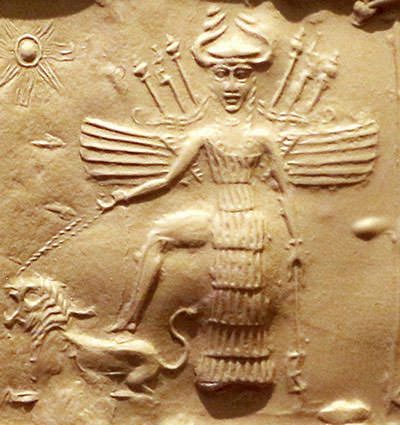
#2 She Was Identified With The Ancient Egyptian Goddesses Hathor And Isis
In 332 BCE, the rule of the Persian Empire in Egypt ended with the victory of Alexander. This led to the establishment of the city of Alexandria in 331 BCE. The death of Alexander in 323 BCE ushered the Ptolemaic Kingdom in 305 BCE. Also called the Lagid kingdom, the Ptolemaic era refers to the Ancient Greek state based in Egypt during the Hellenistic Period. The period saw several examples of Greeks showing reverence towards Egyptian Gods in their most traditional forms. The Greeks are also known to have identified Aphrodite with the ancient Egyptian goddesses Hathor and Isis. This is not uncommon in a polytheistic system where no religion claims a ‘truth’ greater than that of the other. Aphrodite being the patron goddess of the Lagid queens was widely worshiped in Alexandria and had numerous temples in and around the city. The Lagid Queen Arsinoe II was even identified as the mortal incarnation of Aphrodite, and went on to introduce the cult of Adonis to Alexandria.
Main Sources:-
Justin Pollard; Howard Reid (2007). “The Rise and Fall of Alexandria: Birthplace of the Modern World”. Viking. p. 2-7
Nardo, Don (2009). “Ancient Greece”. Greenhaven Publishing LLC. p. 162
Dunand, Françoise (2007), “The Religious System in Alexandria”, in Ogden, Daniel (ed.), A Companion to Greek Religion. Blackwell Publishing, P. 253–63
Keys:-
Hellenistic Period: A period in Mediterranean history starting from the death of Alexander in 323 BCE and the emergence of the Roman Empire in 30 BCE.
Adonis: A beautiful mortal in Greek myths who was deeply loved by Aphrodite
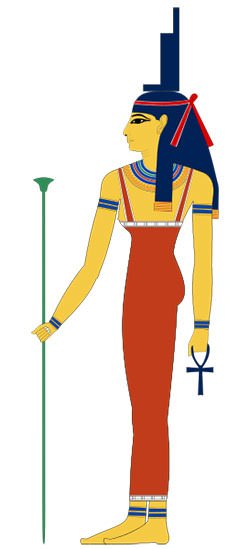
#3 Two Aphrodites Were Worshiped in Ancient Greece
Aphrodite Urania and Aphrodite Pandemos are two common epithets associated with Aphrodite. According to Plato’s Symposium there are two Aphrodites. Aphrodite Urania is the elder one with no mother. She is the “heavenly Goddess” and daughter of Uranus who emerged from the sea foam. Aphrodite Pandemos on the other hand is the daughter of Zeus and Dione and is “common to all the people”. The same distinction is found in Xenophon’s Symposium, although the author is doubtful whether there are two goddesses, or whether Urania and Pandemos are two names for the same goddess. It may be noted that the two Aphrodites were given equal stature in ancient Greece. Perhaps, with time, writings of philosophers and moralists led to the differentiation between the more “celestial” love of body and soul, from pure physical lust.
Keys:-
Uranus: One of the primordial deities of the Greek pantheon. Also called Ouranos and personification of the heavenly sky.
Xenophon of Athens: A Greek military leader, philosopher, and historian, born in Athens. His symposium written in 360 BCE is a Socratic dialogue.
#4 Aphrodisia Was The Main Festival Dedicated To Her
In ancient Greece the festival of Aphrodisia was celebrated annually in the honor of Aphrodite. Along with Aphrodite Pandemos (of the people), Pietho (Goddesses of persuasion) were worshiped in this festival for their roles in the unification of Attica. The festival most likely occurred at the beginning of each Attic year on the fourth day of the month of Hekatombaion, since the fourth day of each month was sacred to the Goddess. Aphrodisia was celebrated across several Greek towns but was especially important in Attica and on the island of Cyprus.
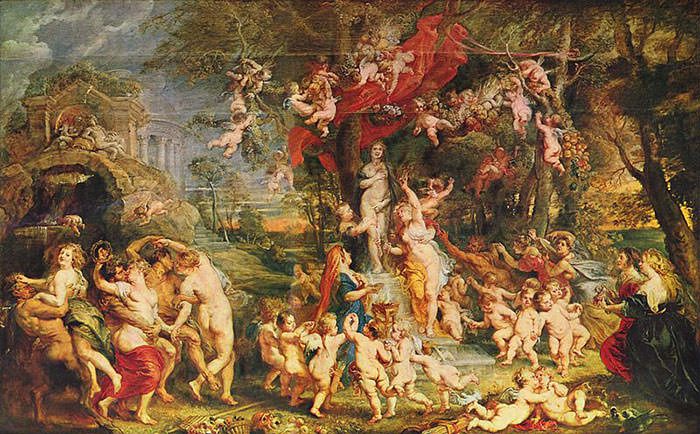
The rites connected with the festival may be deciphered from an inscription dated 287/86 BCE. The sanctuary was purified with the blood of a dove, and the cult images were conducted in a procession to the place, where they were washed. Pausanias, the Greek traveler and geographer of second century CE, would mention the festival centuries later noting: “The worship of Vulgar Aphrodite and of Persuasion was situated by Theseus when he gathered the Athenians from townships into a single city. In my time the ancient images were gone, but existing images were constructed by no mere artist.”
Main Sources:-
Rosenzweig, Rachel (2004). “Worshipping Aphrodite: Art and Cult in Classical Athens”. University of Michigan Press. P15-18
Simon, Erika (2002). “Festivals of Attica: An Archaeological Commentary”. University of Wisconsin Press. P48-51
Ames, Cody. “The Archaeology of Hippolytus’ Cult”. academia.edu.
Keys:-
Hekatombaion: The first month of the year in ancient Greece.
Attica: a historical region that encompasses the city of Athens. Refers to the peninsula projecting into the Aegean Sea, bordering on Boeotia to the north and Megaris to the west.
Theseus: A mythical king and founder-hero of Athens who is known to have unified Attica with Athens as his capital.
#5 She Was Also Worshiped In Her Male Form Aphroditus
Aphroditus was a male deity that may have originated from the ancient city of Amathus, on the island of Cyprus. Macrobius (a fifth century Roman provincial) describes the statue of Aphrodite in Cyprus as being bearded and having male genitals, but clad in female dress and holding a sceptre. This deity was the male version of Aphrodite and was known to have been celebrated in Athens. Aphroditus is also the later God Hermaphroditos whose name simply means “Aphroditus in the form of a Herm”. In Greek myth, Hermaphroditos is the son of Hermes and Aphrodite. Among the oldest surviving images of the God is a late fourth century BCE clay mold fragment for a terracotta figurine, found in the Athenian agora. This figurine, that would have stood about 30 cm in height, represented a female lifting up her dress to reveal male genitals. This gesture was believed to have bestowed good luck and averted evil influences on its audience.
Main Sources:-
Bullough, Vern L.; Bullough, Bonnie (1993). “Cross Dressing, Sex, and Gender”. University of Pennsylvania Press. P29
Heinrich Cornelius Agrippa von Nettesheim; James Freake (1993). “Three books of occult philosophy”. Llewellyn Worldwide. P495
Theophrastus (2004), James Diggle (ed.). “Theophrastus: Characters”. Cambridge University Press, P366
Keys:-
Herm: A statue shaped as a quadrangular stone pillar with a carved head or bust on the top.
Agora: A central public space in ancient Greek city-states. An agora was the center of the athletic, artistic, business, social, spiritual and political life in the city.
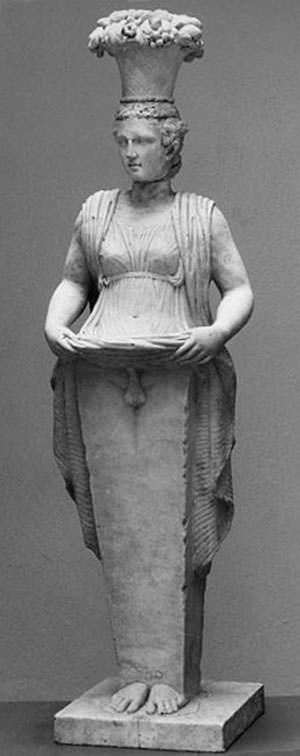
#6 She Is Mostly Depicted Being Accompanied By Erotes, The Gods Of Love
The Erotes (Loves) refers to the collective young and handsome winged Gods that are often depicted along with Aphrodite as a part of her retinue. The foremost of them being: Eros, Himeros and Pothos. Eros is considered as the God of love and sexual intercourse. According to Hesiod in his Theogony, Eros was one of the four original primeval forces born at the beginning of time. In later myths, he is regarded as the son of Aphrodite, either born along with the Goddess when she emerged from the sea or as her son from the God Ares. Himeros is the God of desire and, as per Hesiod, he was present to witness the birth of Aphrodite. He is also now considered as the son of Aphrodite. Pothos is another son of Aphrodite or alternatively of Eros, he is the God of sexual longing and is the third of the major love-gods who accompany Aphrodite.
Main Soures:-
Cyrino, Monica S. (2010). “Aphrodite, Gods and Heroes of the Ancient World”. New York and London: Routledge. P44-45, 48-49
Hesiod. “Theogony and Works and days”. 1988 ed. Oxford University Press. New York. P34-37
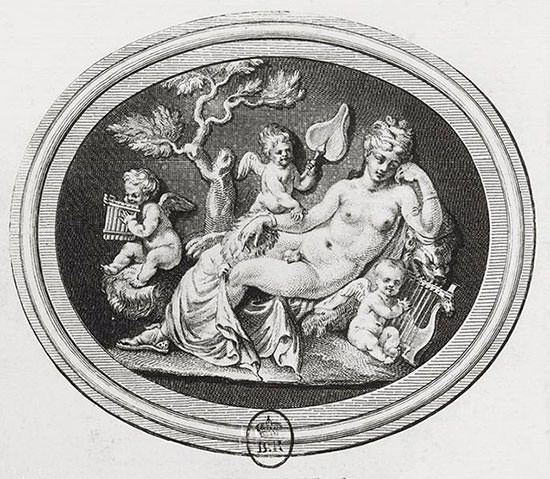
#7 Her Roman Adaptation Was Venerated As The Mother Of The Roman Nation
After the rise of the Roman civilization, Aphrodite was appropriated as the Roman Goddess Venus. According to the Roman historian Titus Livius (59 BC – AD 17), Aphrodite and Venus were officially identified in the third century BCE and hereafter the Romans adopted Aphrodite’s iconography and myths. Aphrodite was the mother of the Trojan hero Aeneas in Greek mythology. The Romans claimed Aeneas as the founder of Rome. Aphrodite/Venus thus became venerated as Venus Genetrix, the mother of the entire Roman nation. In her new role she became more maternal, more militaristic and more concerned with administrative bureaucracy.
Main Source:-
Cyrino, Monica S. (2010). “Aphrodite, Gods and Heroes of the Ancient World”. New York and London: Routledge. P127-130
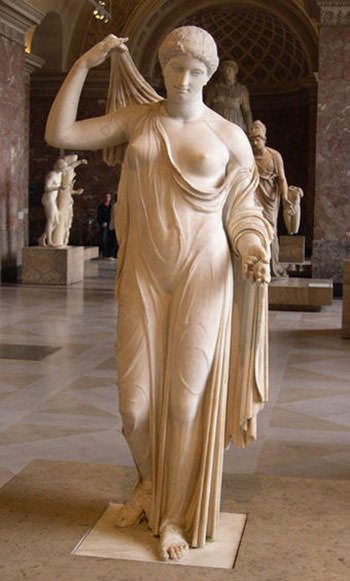
#8 She Was Considered As The Patron Goddess Of Prostitutes
Aphrodite is known to have been the patron Goddess of prostitutes. Prostitution was a common aspect of ancient Greece, especially in the port cities. The city of Corinth, which was one of the primary centers of the Aphrodite cult, was renowned throughout the ancient world for its many hetairai (expensive, well-educated hired companions). The city also had a major temple dedicated to the Goddess located on the Acrocorinth. The Greek geographer, philosopher, and historian Strabo (63 BCE – 24 CE) would later comment on the city, “the Temple of Aphrodite was so rich that it owned a thousand temple-slaves, courtesans, whom both men and women had dedicated to the goddess”. References to Aphrodite in association with prostitution are also found in the islands of Cyprus, Cythera and Sicily. Numerous dedications to Aphrodite made by successful courtesans have also survived over the centuries.
Main Sources:-
Clark, Brian (2017). “THE CORINTHIAN GODDESS: Aphrodite and Her Hierodouloi”. astrosynthesis.com
Cyrino, Monica S. (2010). “Aphrodite, Gods and Heroes of the Ancient World”. New York and London: Routledge. P40-42
Marcovich, Miroslav (1996), “From Ishtar to Aphrodite”, Journal of Aesthetic Education, 39 (2): 43–59
#9 The Dove Is Her Most Prominent Symbol
Just like her Near Eastern precursor Goddesses Inanna-Ishtar, Aphrodite is most commonly associated with the avian symbol of dove. In fact, the ancient Greek word for “dove”, peristerá, may be derived from a Semitic phrase peraḥ Ištar, meaning “bird of Ishtar”. During the festival of Aphrodisia, her sanctuary was known to be purified with the blood of a dove, while the temple of Aphrodite Pandemos in the Athenian Acropolis was decorated with relief sculptures of doves with knotted fillets in their beaks. Other avian symbols associated with the Goddess are goose, swans and sparrows. She rides a chariot pulled by sparrows in Sappho’s “Ode to Aphrodite”.
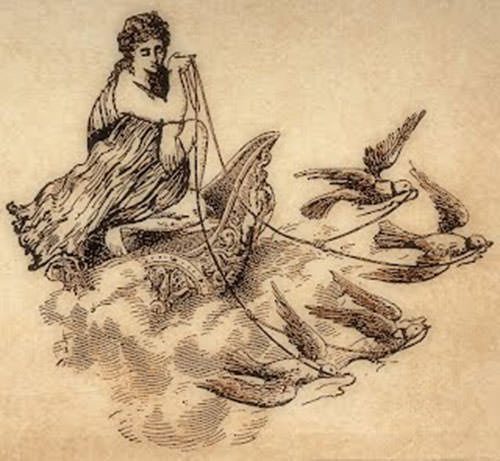
Among flowers, Apphrodite is associated with Rose (rose was stained with color red as she cut her feet on its thorns while running toward her dying lover Adonis), anemone (stained by Adonis’ blood) and myrtle. Among fruits, apple is often associated with her (golden apple from the Judgement of Paris) along with pomegranate, whose seeds she first planted on the island of Kypros. Being born from the sea, Aphrodite is also associated with sea shells, pearls and dolphins.
Main Sources:-
Botterweck, G. Johannes; Ringgren, Helmer (1990). “Theological Dictionary of the Old Testament, vol. VI”. Michigan: Wm. B. Eerdmans Publishing Co. P35-36
Aphrodite: “Highlighting Her Symbols and Their Appropriate Meaning”. spiritualray.com
#10 Aphrodite Has Always Remained An Inspiration For Artists
Known to have been the most beautiful among the Gods, besides being the Goddess of ‘love, beauty and sexual passion’, Aphrodite has always intrigued the interests of artists and writers. The most known among her depictions is the legendary marble statue Aphrodite of Knidos, carved in 364/361 BCE by the Athenian sculptor Praxiteles. Pliny the Elder (23/24 CE – 79 CE) would later praise it as the greatest sculpture ever made. Only a fragment of the figure has survived, but literary descriptions and later coin types have enabled numerous copies to be identified. The statue showed a nude Aphrodite modestly covering her pubic region while resting against a water pot with her robe draped over it for support.
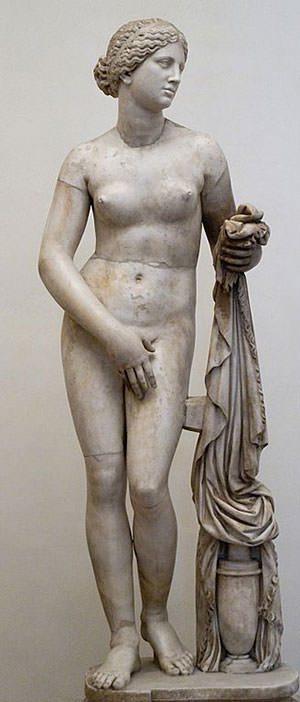
Another legendary work of Aphrodite is attributed to the Greek painter Apelles of Kos, who lived in the times of the above mentioned Praxiteles. He produced the panel painting Aphrodite Anadyomene (Aphrodite Rising from the Sea). It is noted that Alexander gave his own mistress Pankaspe to pose for the artist. During the Hellenistic and Roman periods, the statues of Aphrodite/Venus were abundant, many of them inspired by Praxiteles’s Aphrodite of Knidos. Some other famous works include Crouching Venus, Aphrodite Kallipygos (Aphrodite of the Beautiful Buttocks). Aphrodite was also a favorite of Renaissance painters. She is the subject of Sandro Botticelli’s painting Primavera, “one of the most written about, and most controversial paintings in the world”. Other famous works include Botticelli’s ‘The Birth of Venus’ (1485), Titian’s ‘Venus Anadyomene’ (1525) and Venus of Urbino (1534), and Raphael’s painting in the Stufetta del cardinal Bibbiena (1516).
Main Sources:-
Grant, Michael (1989). “The Classical Greeks, History of Civilization”. New York. Charles Schribner’s Sons. P206, 266
Havelock, Christine Mitchell (2007) [1995] “The Aphrodite of Knidos and Her Successors: A Historical Review of the Female Nude in Greek Art”. P11, 86
Cyrino, Monica S. (2010). “Aphrodite, Gods and Heroes of the Ancient World”. New York and London: Routledge. P77-78
Fossi, Gloria (1998). “Botticelli. Primavera”. (Inglese ed.), Giunti Editore Firenze Italy. P5
Keys:-
Pliny the Elder: Roman author, naturalist and natural philosopher, also naval and army commander of the early Roman Empire.

